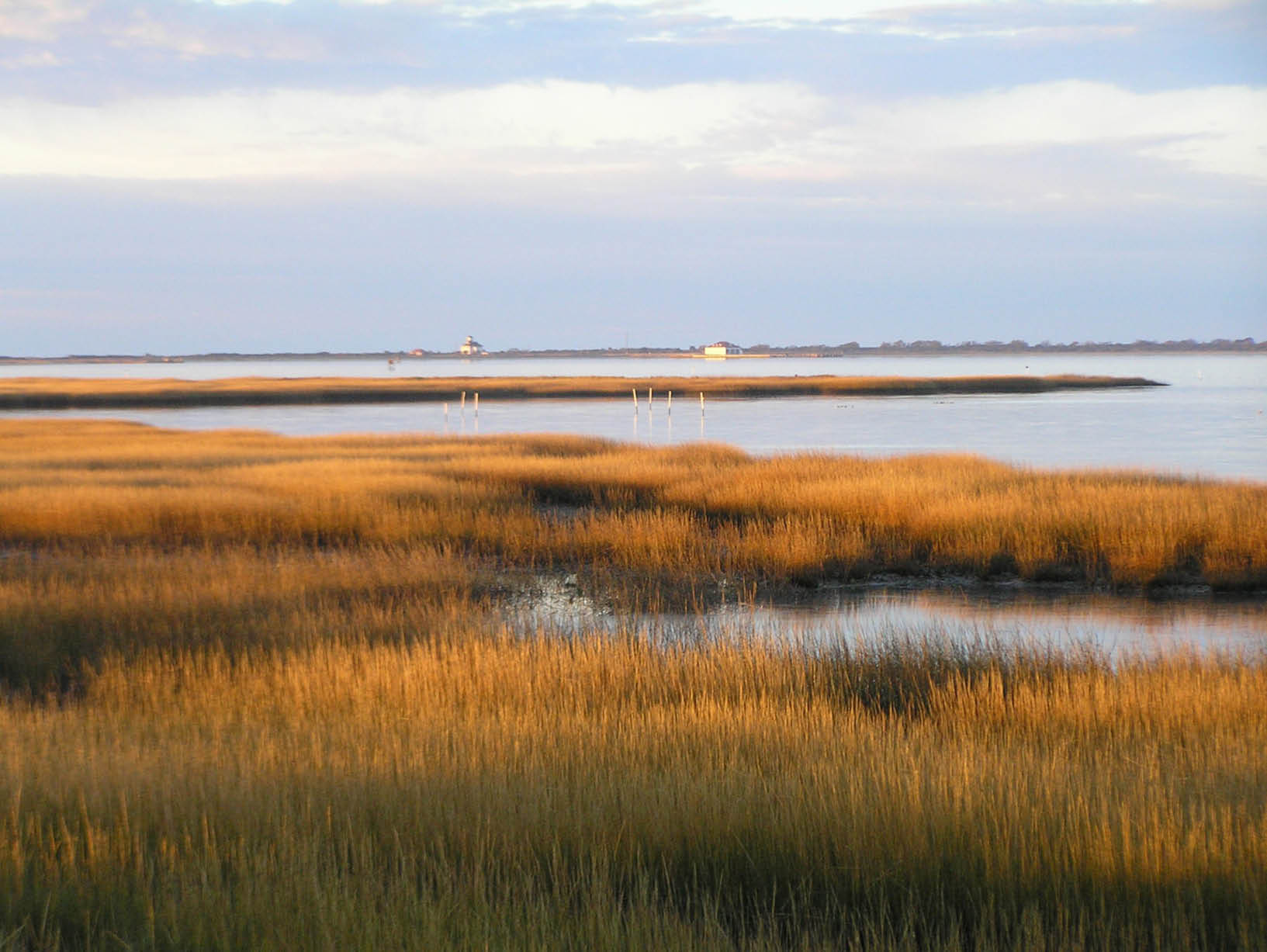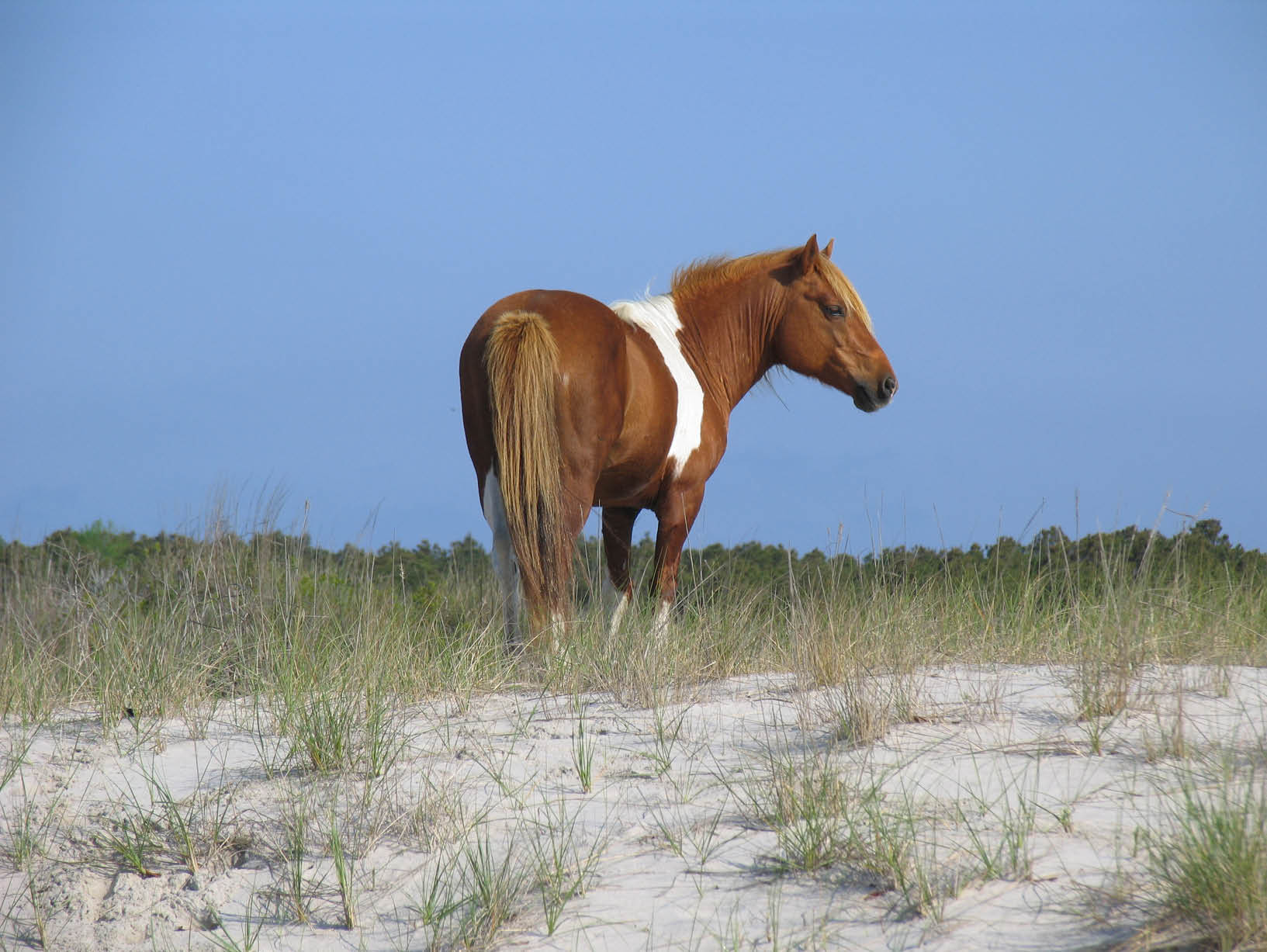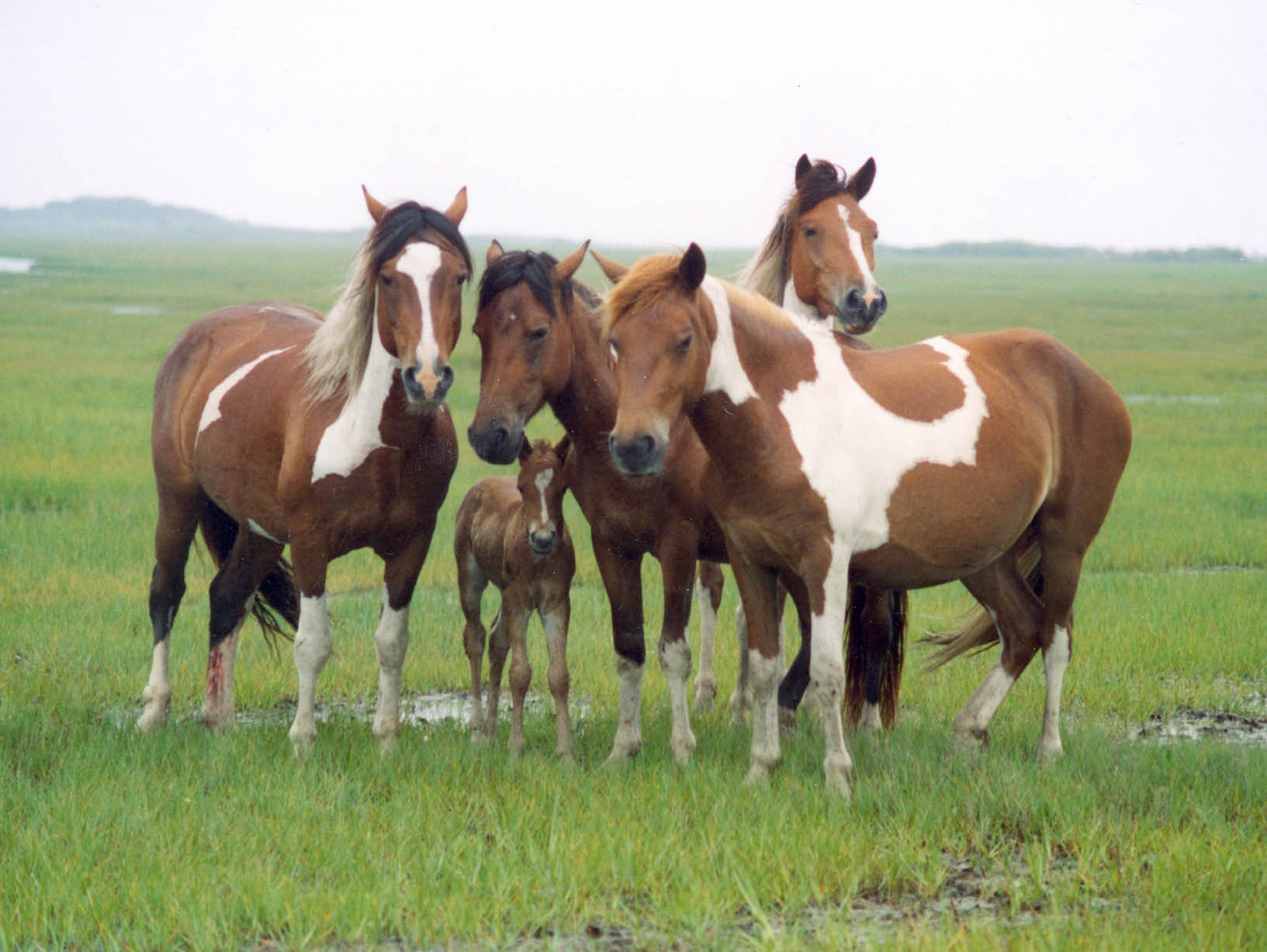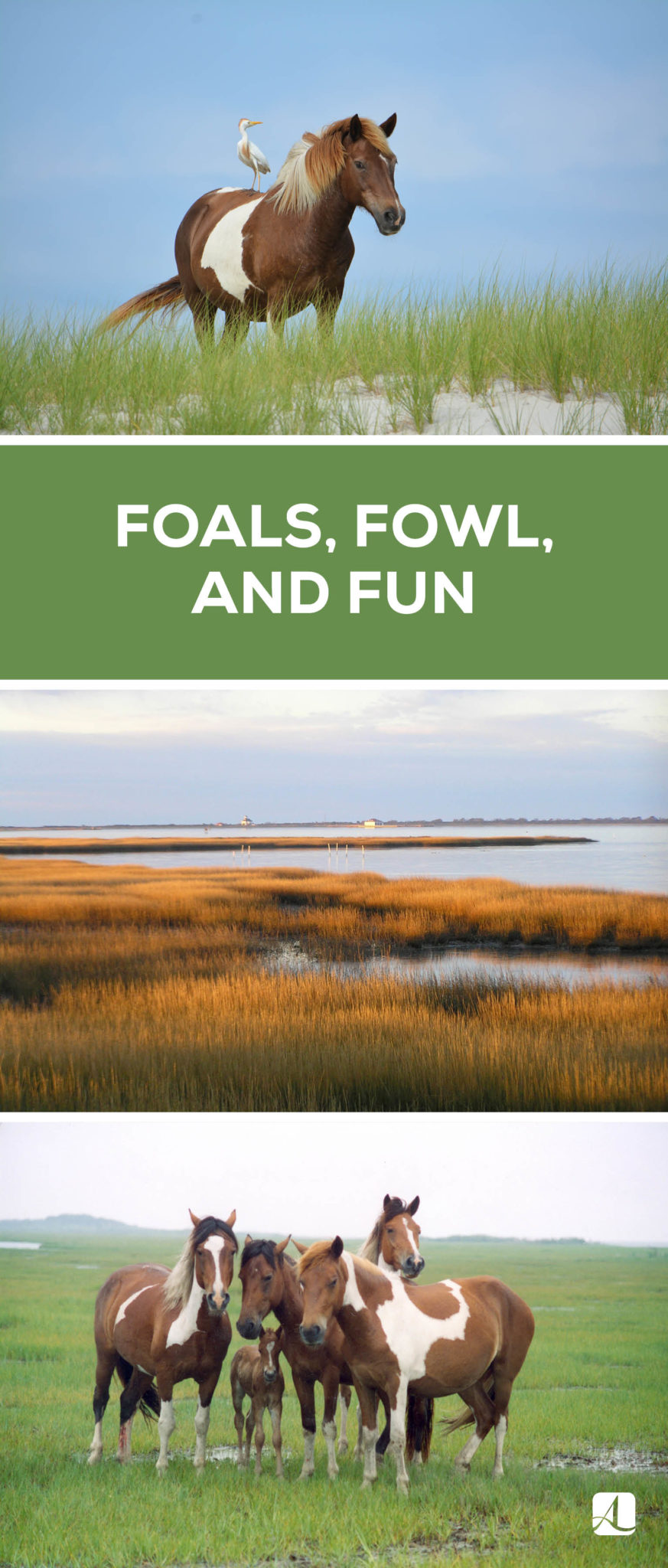Foals, Fowl, and Fun
Photography by National Park Service
For over a decade, one of my family’s favorite vacation spots has been Ocean City, Maryland. With white-sand beaches, a famous boardwalk, and decadent Thrasher’s french fries among its many attractions, this resort town has always been a welcome summer destination.
Then, a few years ago, our usual trek took a wild turn when we traveled about fifteen minutes farther south and visited Assateague Island—a place teeming with nature, discovery, and adventure.

Winds of change
Though there have been many inlets in this area since the 1600s, this remarkable island didn’t exist until 1933, when an immense two-day hurricane ripped through the Delmarva area. In fact, the storm was so strong, it separated the land that would become Assateague Island from the southern Ocean City region on Fenwick Island. In doing so, it created an inlet between the two land masses and a new thirty-seven-mile long barrier island, which extended into Virginia’s Chincoteague National Wildlife Refuge. The Army Corps of Engineers fortified the inlet and have been maintaining it ever since. 2
The intent in the 1950s was to build up the Maryland side of Assateague into a resort town, but another large storm in 1962 literally laid those plans to waste. Three years later, Assateague Island was officially dubbed a government-owned public National Seashore.

Something for everybody
On average, around two million people visit the island each year, and for good reason—it’s an eclectic outdoor paradise. To get started, you can visit the Assateague Island Visitor Center, located on the edge of Maryland’s mainland, where you can pick up a map to plan your day, admire Assateague exhibits, and listen to a ranger discuss all there is to do. When you’re ready to start your journey, the nearby Verrazano Bridge takes you over Sinepuxent Bay to the island—and, as a welcome surprise, you can drive over it or keep your car parked at the visitor center and bike or walk the span to truly soak in the views.
Once on the island, you’ll find an endless stretch of pristine beach to explore, including Assateague State Park, the only oceanfront park in Maryland. Here you can enjoy activities like swimming, surfing, collecting shells (up to a gallon per person!), and fishing. Along the beach in both Maryland and Virginia are OSV zones, where you can ride your over-sand vehicle or horse (with a permit) on the beach. On the bay side of the island, you can hit the water in a kayak or canoe—you can use your own or rent one—to get up-close and personal with the water teeming with life.
If you enjoy roughing it, Assateague certainly has you covered. In addition to hiking the beach, you can bike or walk through miles of trails: in Maryland, there are three half-mile loops to enjoy, while the Virginia district has several trails spanning over ten miles to explore. And what trip would be complete without camping under the stars while hearing the ocean’s crashing waves? On the Maryland side of the island, there are over 150 campsites. You can camp near the beach on the ocean side or bay side, both of which offer picnic tables and fire rings, and there are even campsites for horses in the OSV zones. Whichever suits your needs, you’ll find that nothing beats living out in nature in all its glory.
The animals of Assateague
As a barrier island, Assateague Island is a natural habitat for both land and sea creatures alike. On our first visit, we walked the bridges over the bayside trails and stopped to watch in astonishment as fellow visitors (including kids) waded into the murky marsh, nets in hand, to do some crabbing. A little farther down we saw egrets standing in the water, likewise stalking their prey.
In fact, Assateague is a bird-watcher’s paradise, especially in Chincoteague. Since it is a key location along the Atlantic Flyway for birds, hundreds of species are present throughout the year, including blackbirds, blue herons, snow geese, owls, and bald eagles. If you ever sought to glimpse a North American bird, you will probably find it on Assateague Island.
There are many other types of wildlife to experience here as well, including deer, frogs, toads, foxes, and opossums. Off the coast, don’t be surprised if you see dolphins or even whales frolicking in the water as you enjoy the cool ocean breeze on the beach.

A pony paradise
However, Assateague’s main attraction by far is its majestic wild horses, which are believed to have roamed here since the seventeenth century. As you drive down Bayberry Drive in the island’s Maryland district, you’ll likely see them grazing nonchalantly on the side of the road—and when you reach the beach, you may witness the spectacular scene of the horses galloping on the beach. In all, over two hundred horses reside on Assateague Island: a herd of approximately seventy-five on the Maryland side and 150 fenced in the refuge in Virginia.
You’re welcome to take photos of the horses to your heart’s content; however, for safety purposes, you need to stay at least forty feet away. (This pales in comparison to the 150-foot distance you need to keep between yourself and any seals that may be on the beach.) And, although the horses are indeed free to roam, the National Park Service monitors their health on the Maryland side, while the Chincoteague Volunteer Fire Company manages the Virginia herd, also known as the Chincoteague ponies.
Assateague Island National Seashore has something for everyone, from the ocean to marshes, from surfing to canoeing, from camping to biking, and from history to horses. On this small piece of paradise along the Atlantic Ocean, you’ll find a place where you can truly live life on the edge.
For more info, visit nps.gov/asis






















